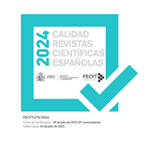Internal and External Mechanisms of Englishization: Changes in Marked and Unmarked Chinese Passive Constructions
Resumen
The Chinese language is changing, and like other languages, has been becoming more like English. This article focuses on the Englishization (Europeanization) of certain Chinese passive constructions. Previous research indicates that written Chinese has seen an increase in the use of the 被 bèi passive construction (BEIC) and a concomitant decrease in use of the notional passive construction (NPC) over time. This assertion is supported by a corpus-based analysis. An apparent-time research study shows that, in general, younger, more educated participants (those hypothesized to have more exposure to English) are more likely to use BEIC than are older, less educated participants in the sentence continuation task. However, this difference between groups is not captured in the binary forced choice task due to the increased use of BEIC under a conscious condition by the older, less educated participants. This finding sheds light on the psychological mechanism of internalization involved with Englishization.
Descargas
Descarga artículo
Licencia
La revista Círculo de Lingüística Aplicada a la Comunicación, para fomentar el intercambio global del conocimiento, facilita el acceso sin restricciones a sus contenidos desde el momento de su publicación en la presente edición electrónica, y por eso es una revista de acceso abierto. Los originales publicados en esta revista son propiedad de la Universidad Complutense de Madrid y es obligatorio citar su procedencia en cualquier reproducción total o parcial. Todos los contenidos se distribuyen bajo una licencia de uso y distribución Creative Commons Reconocimiento 4.0 (CC BY 4.0). Esta circunstancia ha de hacerse constar expresamente de esta forma cuando sea necesario. Puede consultar la versión informativa y el texto legal de la licencia.











